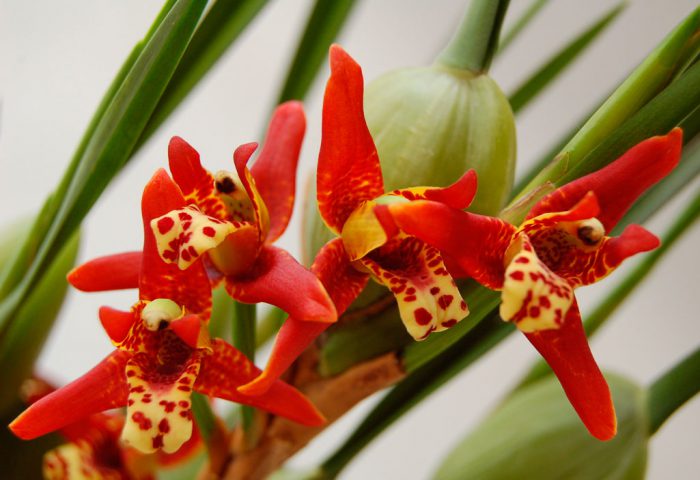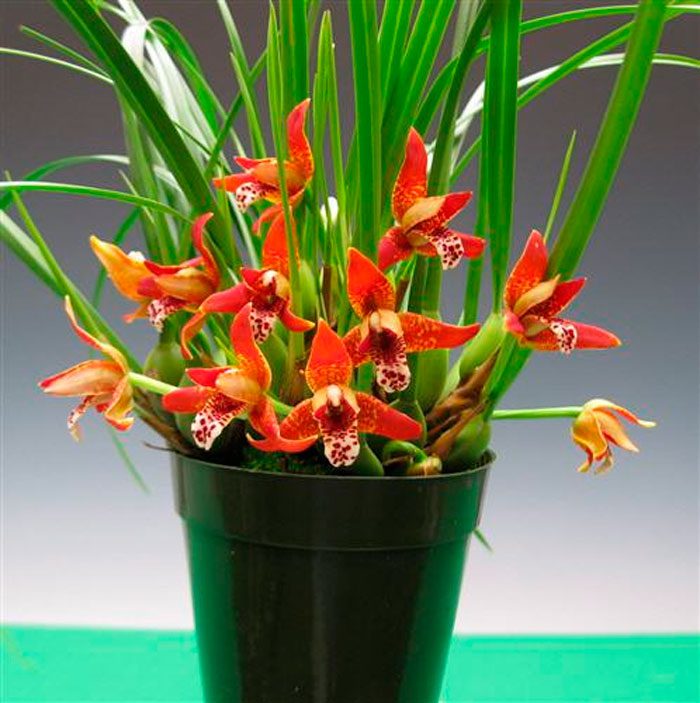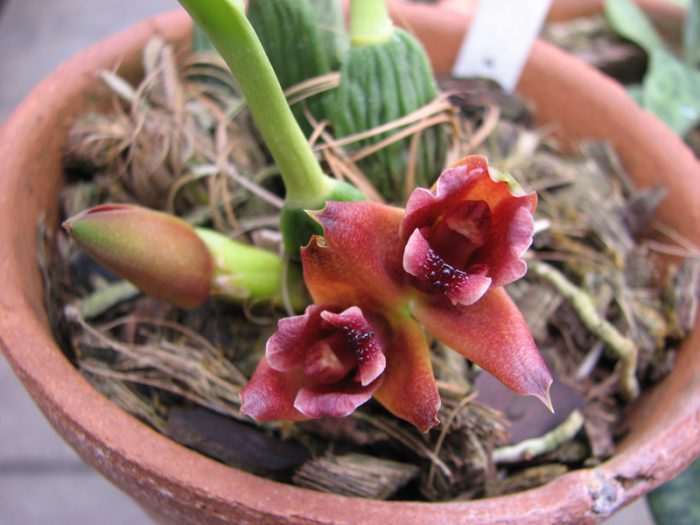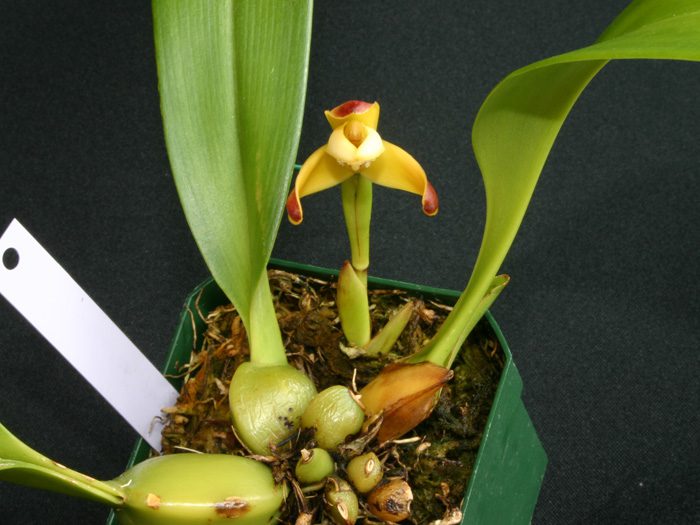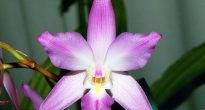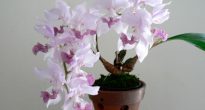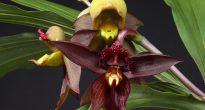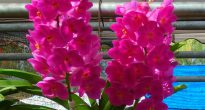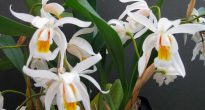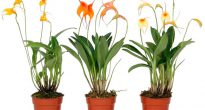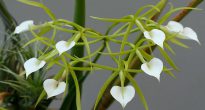Such a large genus as Maxillaria, belonging to the orchid family, is represented by epiphytes. This genus unites more than 300 species of plants that are naturally found in the tropics and subtropics of America. Moreover, these plants have rather strong morphological differences. As a result of the fact that such a variety is pronounced, at the moment it is proposed to divide this genus into several separate ones.
Although the genus is quite extensive, only a few species are grown at home, which have fragrant or large flowers. The most popular is the narrow-leaved maxillaria (Maxillaria tenuifolia). It occurs naturally in areas stretching from Nicaragua to Mexico.
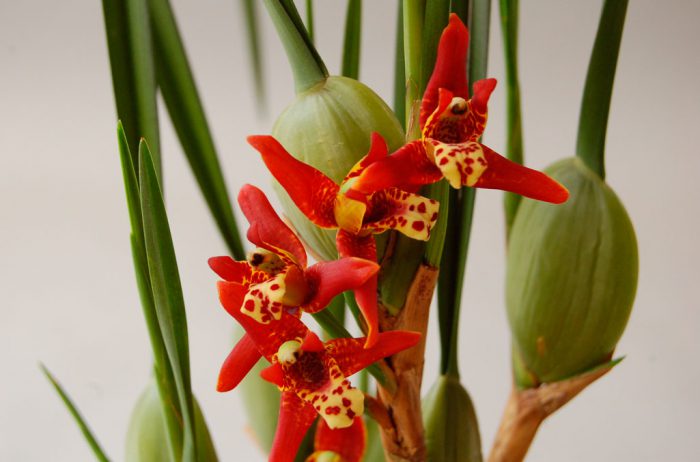
This rather compact sympodial orchid has slightly flattened, smooth ovoid pseudobulbs that reach 3.5-4 centimeters in length and 2.5-3 centimeters in width. Pseudobulbs are located quite close to each other on the rhizome (a creeping, horizontally located ground stem). They grow like a "ladder", that is, each young pseudobulb begins to grow slightly higher than the previous one, because the rhizome is not pressed to the soil surface, and over time it gradually rises. Young pseudobulbs are univalent, while old ones become "bald". Belt-shaped leathery leaves have a pointed end and a pronounced central vein, while the young ones are folded along it. In length they reach 35 centimeters, and in width - only 1 centimeter.
In the wild, the plant blooms in June – July. Short (about 5 centimeters) peduncles develop at the base of young shoots, and they bear only one fragrant flower each. Pronounced zygomorphic flowers are quite large, so they reach about 5 centimeters in diameter. 3 sepals (sepals, which are often confused with petals), lanceolate, have a slightly curved back edge. They reach 2.5 centimeters in length and 1–1.2 centimeters in width, and they are located relative to each other at an angle of 120 degrees. 2 opposite real petals (petals) are 2–2.2 centimeters long and 0.8 centimeters wide. Outwardly, they are similar to ears, but all because they are located almost perpendicular to the surface of the calyx, and at the same time their tips are slightly bent. The large lip (3rd petal) is outwardly similar to the protruding long tongue. The reproductive organ of the flower (column) reaches 1.5 centimeters in length and has a slightly curved hook-shaped tip. The color of the flower is mainly red, while the bases of the sepals and petals, and also the column, are painted yellow.The lip also has a yellow color, while on its surface there are many reddish specks.
This kind of orchid, unlike other representatives of the extensive orchid family, does not have such a spectacular appearance. However, many growers grow it for the unique aroma of flowers, similar to pineapple.
Content
Caring for the maxillaria orchid at home
Maxillaria is best suited for cultivation by experienced orchid growers. In order for a plant to develop and bloom normally, it needs to provide special conditions of detention, which sometimes is not so easy to do in indoor conditions. Experts advise using orchidariums, specialized greenhouses or terrariums for growing it.
Illumination and temperature conditions
In order to successfully grow this kind of orchid, it is imperative to select the appropriate temperature and illumination for it. Maxillaria narrow-leaved in natural conditions prefers to grow in the mountains, in this regard, it needs a lot of light and not too high air temperature. Such bright lighting and coolness are required by the flower all year round. In this regard, it is recommended to illuminate with special phyto-lamps, it is worth remembering that the duration of daylight hours throughout the year should be from 10 to 12 hours. And the optimal level of illumination required for a flower is not less than 6000-8000 lux.
This orchid should be protected from direct sunlight. This is not due to the high degree of illumination that they carry, but to an increase in air temperature. The fact is that such a flower needs moderate temperatures, and it reacts extremely negatively to heat. So, the optimal temperatures for growing it are from 18 to 22 degrees. In this regard, it is impossible to put maxillaria on windows with a southern orientation, because even if it is shaded, the air temperature will still be high.
It is worth remembering that such a plant can be completely replaced by artificial lighting. At the same time, special phytolamps must be used for lighting. Due to this, orchids can be identified as the coolest corner in the apartment, where the sun's rays will not reach it, as well as warm air heated by heating devices. This genus of orchids differs from almost all the others in that it does not require a mandatory temperature drop during the day to lay flower stalks.
How to water
This genus of orchids has another difference from the rest of the orchid family. The fact is that on the surface of its roots there is no porous protective layer (velamen), which is designed to prevent the rapid evaporation of the accumulated moisture. In this regard, overdrying of the substrate is contraindicated for the flower, since as a result of this, the roots begin to die off. But you should not flood the flower too much, because with stagnant water in the substrate, rot may appear on the root system. You need to water in such a way that the potted substrate is always slightly damp (not wet).
Watering is necessary only with soft water, the acidity of which is 5-6 pH. At the same time, experts recommend using well-settled water, which must be filtered. Watering is carried out by completely immersing the pot or block in a bowl filled with water. You need to take out the orchid after 20-30 minutes and wait until the excess liquid drains. Only then can it be put in its usual place.
Humidity
Maxillaria can grow indoors with dry air, but it is best if the humidity is kept at 70 percent. It is recommended to use household humidifiers and steam generators to increase humidity.For example, the pot can be placed on a tray filled with pebbles with a small amount of water added. It is also recommended to moisten the flower from the sprayer, but it is only advisable to carry out such a procedure in the morning and evening (not in the afternoon).
Earth mix
Blocks, pots or special hanging baskets can be used to grow this kind of orchids. But at the same time, planting maxillaria in a pot is not recommended because of the special growth of the "ladder", because after only 12 months the flower will fall on its side under its own weight. To avoid this, it is recommended to purchase supports made from tubes and covered with a layer of coconut fiber from the flower shop. They are placed in containers at an angle. As a result, the rhizome will grow under this support, fixing its roots in the coconut fiber.
Sphagnum is perfect for planting such an orchid, and no other additives are required.
A large piece of pine bark is used as a block, and it must be long. The roots and rhizome previously wrapped in sphagnum must be securely fixed on the block surface.
Fertilizer
Top dressing is carried out during intensive growth once every 14–20 days. To do this, use a special complex fertilizer for orchids, and take ¼-1/6 of the recommended dosage on the package.
Reproduction methods
Propagation of maxillaria grown indoors is possible only by dividing the rhizome into parts. It should be remembered that the delenka must necessarily have at least 3 adult pseudobulbs.
For reproduction under industrial conditions, seeds are used, as well as the meristem method (cloning).
Transplant features
The transplant is carried out only if absolutely necessary. For example, after the plant ceases to fit in a pot or on a block.
Diseases and pests
Resistant to diseases and pests. However, if the rules of care are not followed or the flower is placed in an unfavorable climate for it, it dies very quickly.
Flowering features
If the illumination and temperature conditions are correct, then flowering can occur in any of the months. After blooming, the flower withers only after 30–40 days, while the duration of flowering is on average 4 months.
Video review
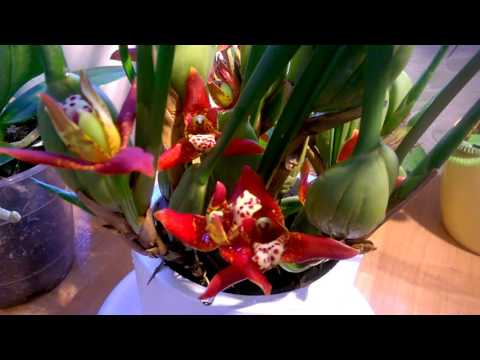

Watch this video on YouTube

